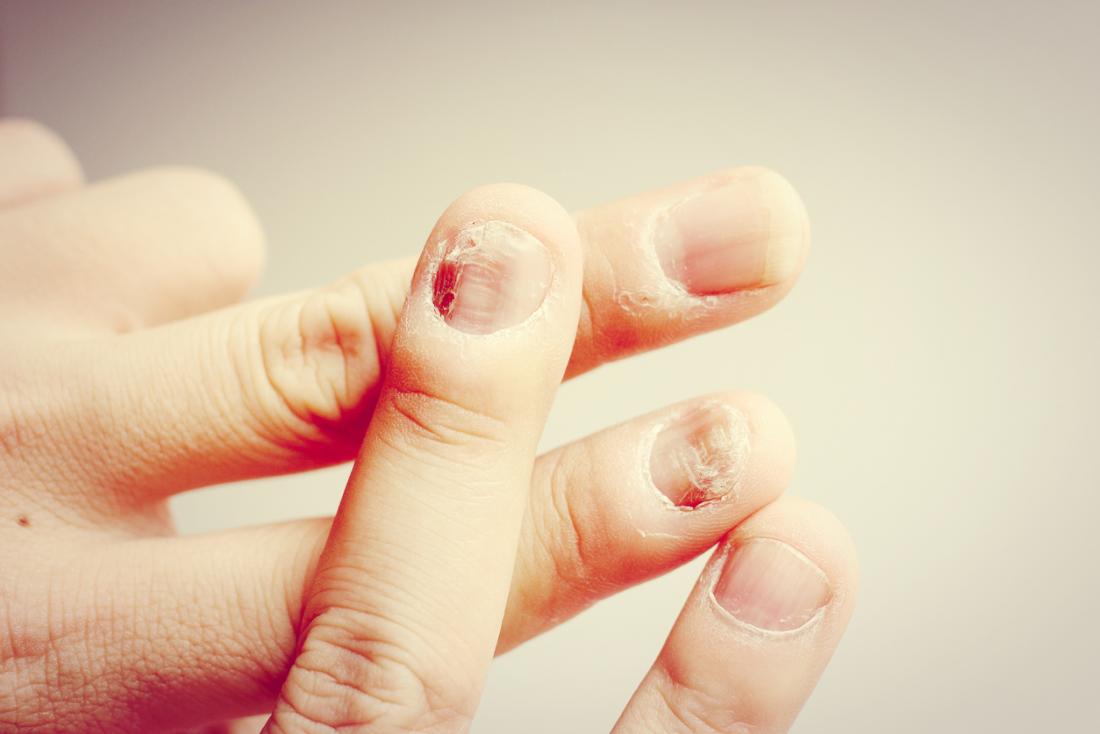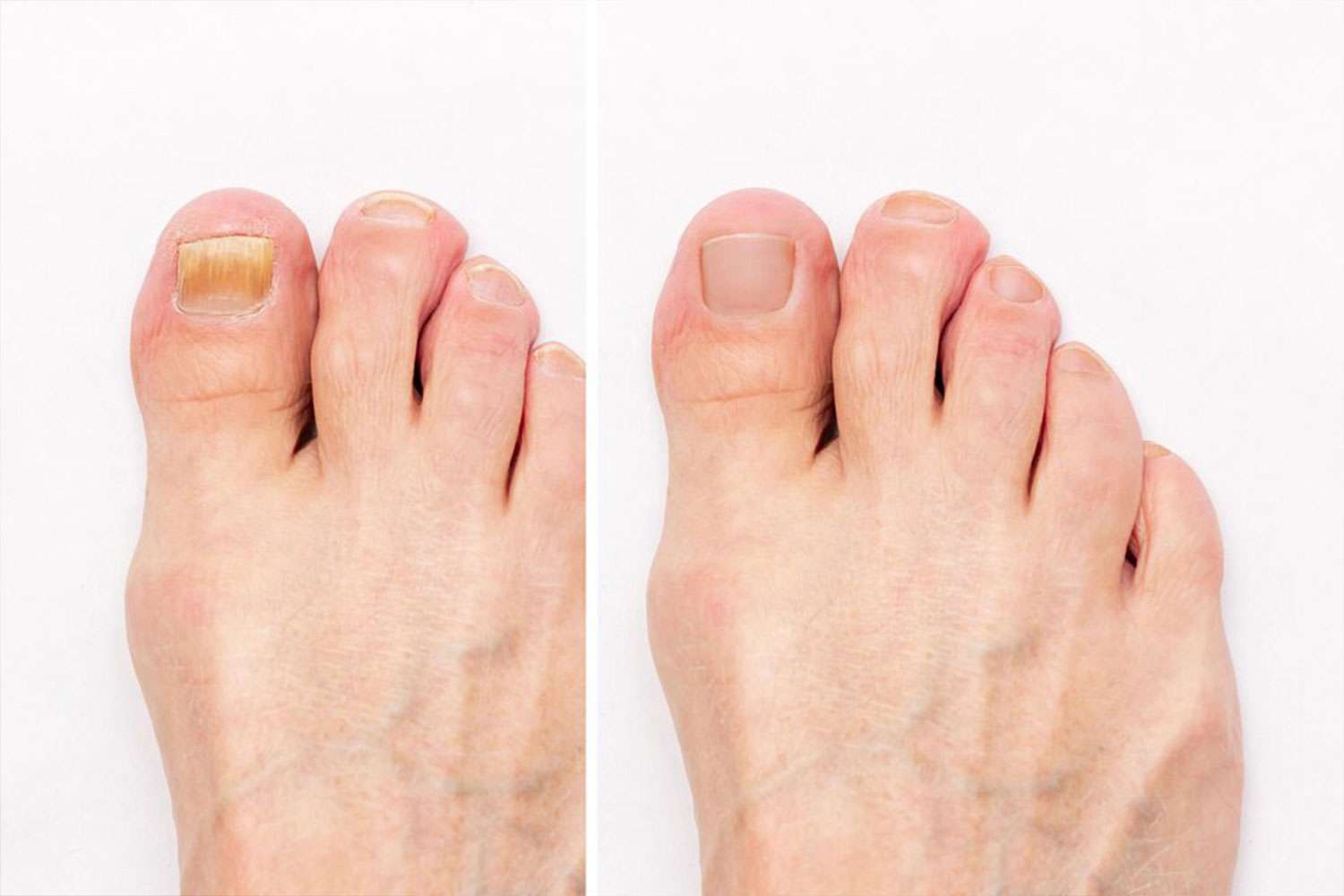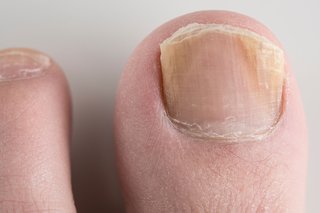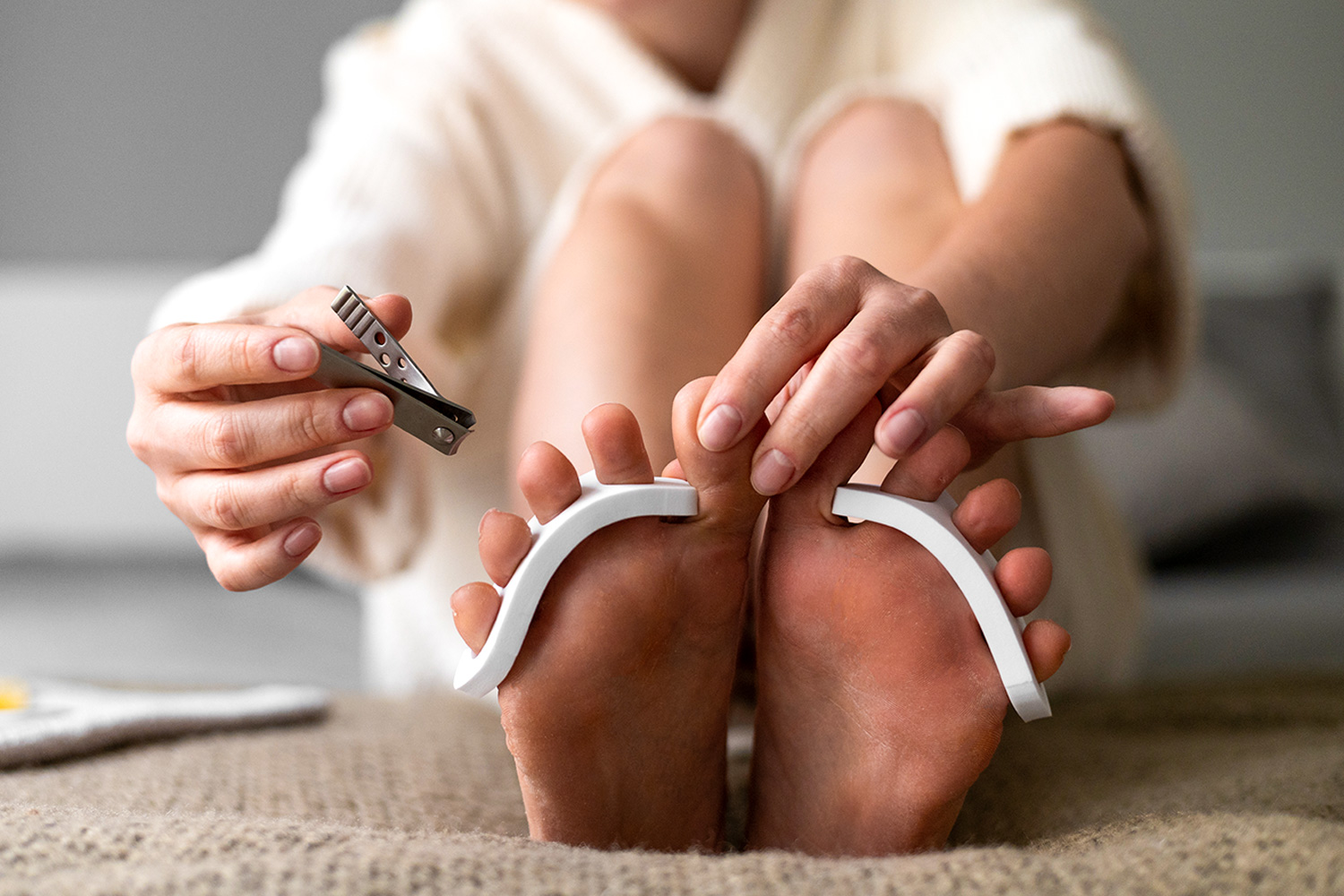Introduction

Nail fungus, also known as onychomycosis, is a common condition that affects millions of people worldwide. It is often accompanied by misconceptions, including the belief that it does not cause pain. However, the truth is that nail fungus can indeed be uncomfortable and even painful. In this article, we will explore the causes of nail fungus infections and the impact they have on pain. We will also discuss the signs of pain from nail fungus and various methods to manage and seek medical help. By understanding the pain associated with nail fungus, we can take steps to prevent and treat this condition effectively.
Overview Of Nail Fungus And Common Misconceptions
Nail fungus, also known as onychomycosis, is a common condition that affects millions of people worldwide. It is caused by fungal infections that thrive in warm and moist environments. One common misconception is that nail fungus does not cause pain. However, a severe case of nail fungus can indeed be painful and may even lead to permanent damage if left untreated. Another misconception is that nail fungus only affects the toenails. In reality, it can also affect the fingernails. It is important to debunk these misconceptions and understand the potential pain associated with nail fungus infections.
Causes Of Nail Fungus Infections And Its Impact On Pain
Nail fungus infections are commonly caused by fungi known as dermatophytes, which thrive in warm and moist environments. These fungi can enter the nail through small cuts or gaps in the nail bed, leading to an infection. The presence of these fungi can cause the nail to become thick, discolored, brittle, and may even cause it to separate from the nail bed. As the infection progresses, the buildup of fungus can put pressure on the surrounding tissues, leading to pain and discomfort. It is crucial to address nail fungus infections promptly to prevent further pain and potential complications.
Understanding Nail Fungus

Nail fungus, scientifically known as onychomycosis, is a common condition that affects the nails, especially those on the toes. It is caused by fungal infections, particularly dermatophytes, which thrive in warm and moist environments. These fungi can enter the nail through small cuts or gaps in the nail bed, leading to an infection. The presence of these fungi can cause the nails to become thick, discolored, and brittle. As the infection progresses, it can lead to pain and discomfort, impacting the overall health and wellbeing of an individual. Understanding the nature of nail fungus is crucial in effectively managing and treating the condition.
Types Of Nail Fungus And Their Symptoms
There are several types of nail fungus that can cause pain and discomfort. The most common types include:
- Dermatophytes: These fungi are responsible for the majority of nail fungal infections. Symptoms include thickened nails, discoloration (yellow or white), and nail brittleness.
- Yeast: Yeast infections can lead to a white or yellowish discoloration of the nails, along with pain and swelling.
- Mold: Nail mold infections are less common but can cause nails to become thickened, discolored, and brittle.
- Nondermatophytic molds: These molds can cause similar symptoms to dermatophytes, including thickening and discoloration of the nails.
It’s important to identify the type of fungus causing the infection in order to determine the most appropriate treatment.
Factors That Contribute To The Pain Associated With Nail Fungus
Factors that contribute to the pain associated with nail fungus include the severity of the infection and the type of fungus involved. When the fungus penetrates deep into the nail bed, it can cause inflammation and pain. Additionally, the physical changes in the nail, such as thickening and brittleness, can lead to discomfort. Poor circulation and a weakened immune system can also contribute to increased pain from nail fungus. It’s important to address these underlying factors and seek proper treatment to alleviate the pain caused by nail fungus.
Signs Of Pain From Nail Fungus

Signs of pain from nail fungus include discomfort and sensitivity in the affected nails. The nails may feel tender or painful to the touch. In some cases, the pain may be constant or worsen when pressure is applied. Other physical symptoms of nail fungus pain include redness, swelling, and inflammation around the affected nails. The nails may also become thickened, brittle, and easily breakable. It’s important to recognize these signs and seek proper treatment to alleviate the pain and prevent further complications.
Identifying Discomfort And Sensitivity In Affected Nails
Discomfort and sensitivity in affected nails are common signs of pain caused by nail fungus. People with nail fungus may experience tenderness or pain when pressure is applied to the affected nails. The nails may feel tender to the touch and may be sensitive to heat or cold. In some cases, the pain may be constant or worsen over time. Other symptoms to look out for include redness, swelling, and inflammation around the affected nails. It is important to recognize these signs and seek proper treatment to alleviate the pain and prevent further complications.
Other Physical Symptoms Indicating Pain From Fungal Infections
In addition to discomfort and sensitivity in the affected nails, there are other physical symptoms that may indicate pain from fungal infections. These symptoms can include:
- Thickened or distorted nails
- Brittle or crumbly nails
- Discoloration of the nails, such as yellow or brown
- Foul odor emanating from the nails
- Build-up of debris under the nails
If you experience any of these symptoms along with pain in your nails, it is important to seek medical attention for proper diagnosis and treatment. Untreated nail fungus can lead to more severe complications and further discomfort.
Managing Pain From Nail Fungus

When it comes to managing pain from nail fungus, there are several options available. Home remedies can offer relief and help reduce symptoms. Soaking the affected nails in warm water with Epsom salt or apple cider vinegar can help alleviate pain and discomfort. Applying over-the-counter antifungal creams or solutions directly to the nails can also help eliminate the fungus and relieve pain. If home remedies do not provide sufficient relief, over-the-counter pain medications can be taken to reduce discomfort. It is important to carefully follow the instructions on any treatment or medication and consult a healthcare professional if the pain persists or worsens. By taking these steps, individuals can effectively manage pain associated with nail fungus.
Home Remedies For Pain Relief And Symptom Reduction
Home remedies can offer relief for pain and reduce symptoms associated with nail fungus. Soaking the affected nails in warm water with Epsom salt or apple cider vinegar can help alleviate pain and discomfort. These solutions can also help soften the nails, making it easier to trim and maintain proper hygiene. Applying over-the-counter antifungal creams or solutions directly to the nails can help eliminate the fungus and relieve pain. It is important to carefully follow the instructions on any treatment or medication.
Over-the-counter Treatments And Medications
When it comes to managing pain and symptoms associated with nail fungus, there are several over-the-counter treatments and medications available. Antifungal creams and ointments, such as clotrimazole or miconazole, can be directly applied to the affected nails to help eliminate the fungus and provide relief. Other options include medicated nail polish or nail lacquer, which can be brushed onto the nails to treat the infection. It is important to follow the instructions provided with these products and use them consistently for the recommended duration to achieve the best results.
Seeking Medical Help

If self-care measures and over-the-counter treatments are not providing sufficient relief from the pain associated with nail fungus, it may be necessary to seek medical help. A healthcare professional, such as a dermatologist or podiatrist, can accurately diagnose the infection and provide appropriate treatment options. They may prescribe antifungal medications, either oral or topical, to effectively eliminate the fungus and alleviate pain. In some cases, they may recommend procedures such as laser therapy or surgical removal of the affected nail. It is important to consult a healthcare professional if the pain persists or worsens despite home remedies and OTC treatments.
When To Consult A Healthcare Professional About Nail Fungus Pain
If self-care measures and over-the-counter treatments are not providing sufficient relief from the pain associated with nail fungus, it may be necessary to seek medical help. A healthcare professional, such as a dermatologist or podiatrist, can accurately diagnose the infection and provide appropriate treatment options. They may prescribe antifungal medications, either oral or topical, to effectively eliminate the fungus and alleviate pain. In some cases, they may recommend procedures such as laser therapy or surgical removal of the affected nail. It is important to consult a healthcare professional if the pain persists or worsens despite home remedies and OTC treatments.
Available Medical Treatments And Interventions
For individuals with nail fungus experiencing persistent pain or those seeking more aggressive treatment options, medical interventions are available. Healthcare professionals, such as dermatologists or podiatrists, may prescribe antifungal medications, either oral or topical, to effectively eliminate the fungus and alleviate pain. In some cases, procedures such as laser therapy or surgical removal of the affected nail may be recommended. These interventions aim to directly target and eliminate the fungal infection, providing relief from pain and promoting the growth of healthy nails. It is important to consult a healthcare professional to determine the most suitable treatment approach for each individual case.
Conclusion

In conclusion, nail fungus can be a source of significant pain and discomfort. It is important to recognize the signs of nail fungus infection, such as discoloration and distortion of the nails, and take action to manage the pain. Home remedies and over-the-counter treatments can provide relief and symptom reduction. However, if the pain persists or if there are severe symptoms, it is crucial to seek medical help. Healthcare professionals can offer effective treatments and interventions, such as antifungal medications or surgical procedures, to eliminate the infection and promote nail health. Prevention strategies should also be implemented to avoid future nail fungus pain. By maintaining good hygiene and taking care of the nails, individuals can promote overall well-being and prevent nail fungus pain.
Prevention Strategies To Avoid Nail Fungus Pain
To prevent nail fungus pain, it is important to implement some preventive strategies. These include:
- Practice good hygiene: Keep your nails clean and dry, and regularly trim them to prevent dirt and moisture from accumulating.
- Wear proper footwear: Choose shoes that allow your feet to breathe and avoid wearing tight-fitting or damp shoes.
- Use protective measures: Wear flip-flops or sandals in public places like communal showers or locker rooms, and avoid sharing shoes or socks with others.
- Keep feet and nails moisturized: Apply moisturizer to your feet and nails regularly to prevent dryness and cracking.
- Avoid trauma to the nails: Protect your nails from injuries and trauma, as they can create an entry point for fungal infections.
By following these prevention strategies, you can reduce the risk of nail fungus infections and prevent associated pain and discomfort.
Promoting Nail Health And Overall Well-being
To promote nail health and overall well-being, it is important to adopt good nail care practices. This includes keeping nails clean and dry, avoiding harsh chemicals and excessive moisture, and regularly trimming them. A balanced diet rich in vitamins and minerals can also contribute to healthier nails. Additionally, maintaining overall physical and mental well-being through exercise, stress management, and adequate rest can have a positive impact on nail health. Taking these steps can help prevent nail fungus and promote the overall health and appearance of your nails.
Frequently Asked Questions about Nail Fungus and Pain
Q: Does nail fungus hurt?
A: Nail fungus, also known as onychomycosis, can sometimes cause pain and discomfort. However, not everyone experiences pain with this condition. Let’s explore this topic further.
Q: What are the common symptoms of nail fungus?
A: Nail fungus often leads to thickened, discolored, and brittle nails. The affected nails may also become distorted in shape and emit a foul odor. While pain is not always present, it can occur in some cases.
Q: What causes nail fungus pain?
A: Pain associated with nail fungus may be caused by several factors. When the fungus invades the nail bed, it can lead to inflammation, which may result in pain or tenderness. Additionally, if the nail becomes thickened or distorted, it can press against the surrounding tissues and cause discomfort.
Q: Is nail fungus pain constant or intermittent?
A: The pain caused by nail fungus can vary from person to person. Some individuals may experience constant pain, while others may only feel discomfort when pressure is applied, such as when wearing shoes. The intensity of the pain can also vary.
Q: Can nail fungus pain worsen over time?
A: In some cases, the pain associated with nail fungus can indeed worsen over time. As the infection progresses, the fungal growth may spread and further damage the nail bed, leading to increased pain and potential complications.
Q: Are there any risk factors for developing painful nail fungus?
A: Certain factors can increase the likelihood of experiencing pain from nail fungus. These include repeated nail trauma, preexisting nail conditions, poor circulation, diabetes, a weakened immune system, and wearing tight or ill-fitting shoes.
Q: How is nail fungus pain treated?
A: Treating nail fungus pain involves addressing the underlying fungal infection. This can be achieved through various methods, such as over-the-counter antifungal creams, prescribed oral medications, or laser therapy. If the pain is severe or accompanied by significant nail damage, surgical interventions may be necessary.
Q: Can nail fungus pain be prevented?
A: While there is no foolproof way to prevent nail fungus pain, taking certain precautions can help reduce your risk. These include keeping your feet clean and dry, wearing breathable footwear, avoiding sharing nail clippers or files, maintaining good foot hygiene, and promptly treating any nail or foot injuries.
Q: When should I seek medical help for nail fungus pain?
A: If you are experiencing severe pain, your condition is not improving despite home treatments, or you notice any signs of infection (such as redness, swelling, or pus), it is advisable to seek medical assistance. A healthcare professional can evaluate your symptoms, provide a proper diagnosis, and recommend suitable treatment options.
It is important to note that this FAQ is intended for informational purposes and should not replace professional medical advice. If you have concerns about nail fungus or any related symptoms, please consult a healthcare professional for accurate diagnosis and appropriate treatment.

I am proud to offer non-toxic beauty options. The gel polishes I offer are “9-Free”, free of nine of the most commonly found allergens and toxic chemicals in nail polish, and cruelty-free, vegan, and HEMA-free. The nail lacquers I offer range between “7-Free” and “16+-Free” and are also cruelty-free and vegan.